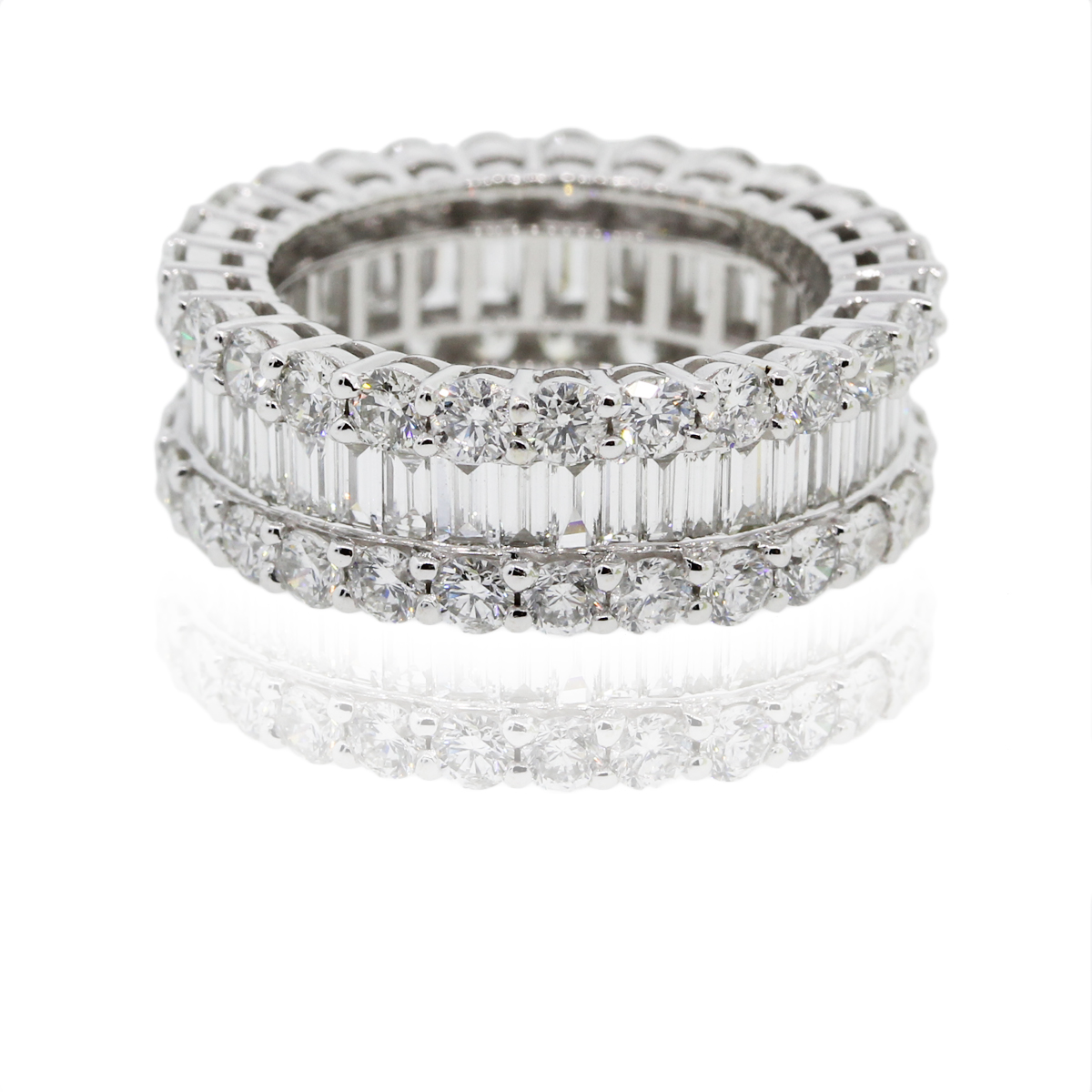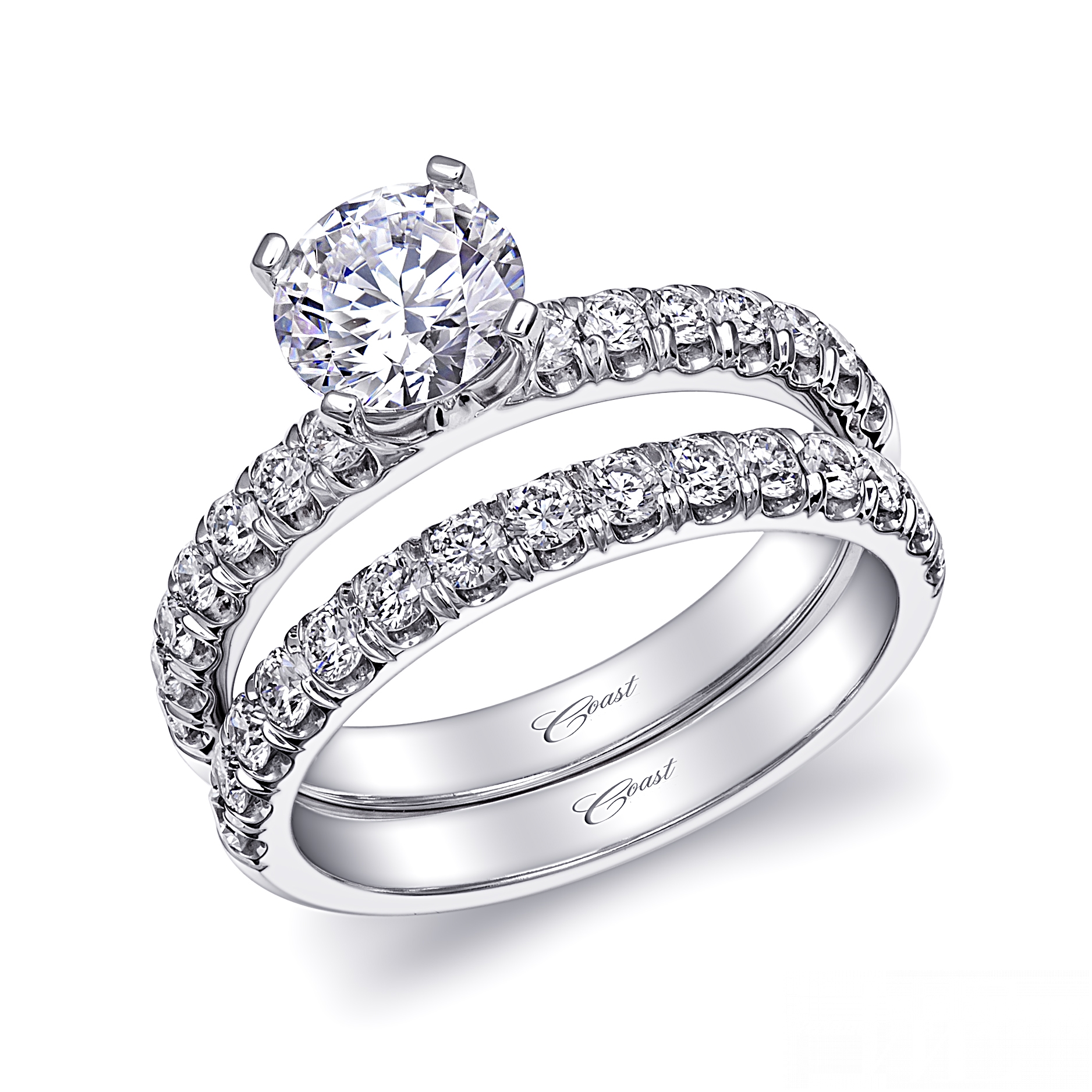1. Narrow Down Your Choices
Diamonds or gemstones, platinum or gold—narrow down your ring options. Take it one step at a time. Start with style. What’s your vision? A simple band or one with embellishments? Do you want your wedding ring to be the same metal as your engagement ring? Do you think you and your partner’s rings should match? Work out these kind of question so you can zero in on exactly what you’re looking for.
2. Buy A Set
If you prefer to be surprised by the engagement ring, this may not work, but knowing what bands go with the engagement ring can help you make a decision. For example, if you have a unique engagement ring, you may want a simple, no-fuss band, whereas a simple engagement ring may call for the added sparkle of a diamond pavé band.
3. Start Searching Early
Once you have a basic idea of what kind of ring you’d like, it’s time for the fun part: trying them on! Give yourselves at least two to three months before the wedding date to ring shop. You’ll need time to browse, research prices and revisit rings that catch your eye.
4. Mix It Up
Compromise; if you like platinum and your partner likes yellow gold. There’s no rule that says you have to choose the same metal or even style. You could compromise with bands that blend the two metals together or just be totally different— choose wedding bands that reflect your individual styles.
5. Budget
Shop with the assumption that you’ll spend about 3 percent of your total wedding budget on the rings. Depending on the retailer, a plain, 14-karat gold or simple platinum band can cost around $1,000. Embellishments, like diamonds or engraving, will quickly add to the cost, so factor that into your budget if you plan to personalize your rings with any of these extras. The price of engraving is usually based on the number of characters, the font used and whether it’s engraved by hand or machine (hand is usually pricier).
6. Keep Your Everyday Life in Mind
Remember: You’re going to wear this band every day, so the goal is to choose something that becomes a part of your life. If you work with your hands, you want to search for a simple, solid metal ring and avoid gemstones that can come loose or carvings, which can trap dirt. If you’re super active, go for platinum, it’s durable (when scratched, the metal is merely displaced and doesn’t actually wear away).
7. Be Different
You may love the idea of a braided rose gold ring or a diamond eternity band, but once you get to the store, try rings that aren’t on your inspiration board. Chat with the jeweler, then let them make suggestions based on what you like and don’t rule anything out.
8. Long Term Thinking
While you shouldn’t be afraid of being trendy, make sure the style you choose is something you’ll want to wear for the next 30 years. Don’t stress too much: You’re not married to the ring and can always make changes to it later on to mark a special anniversary.
9. Maintenance
Keep your wedding band sparkling, wash and soak it in warm sudsy water, then gently brush it with a soft toothbrush or eyebrow brush (too much pressure can loosen the stones from their setting), rinse it and pat it dry with a soft lint-free cloth.
10. Size It
Most people rarely take off their wedding bands; To find the right size that will best weather all the changes, schedule your final ring fitting at a time when you’re calm and your body temperature is normal. That means you should never finalize first thing in the morning (you retain water from the night before), right after you’ve exercised (fingers swell) or when you’re extremely hot or cold (which can cause your hands to expand and shrink).









